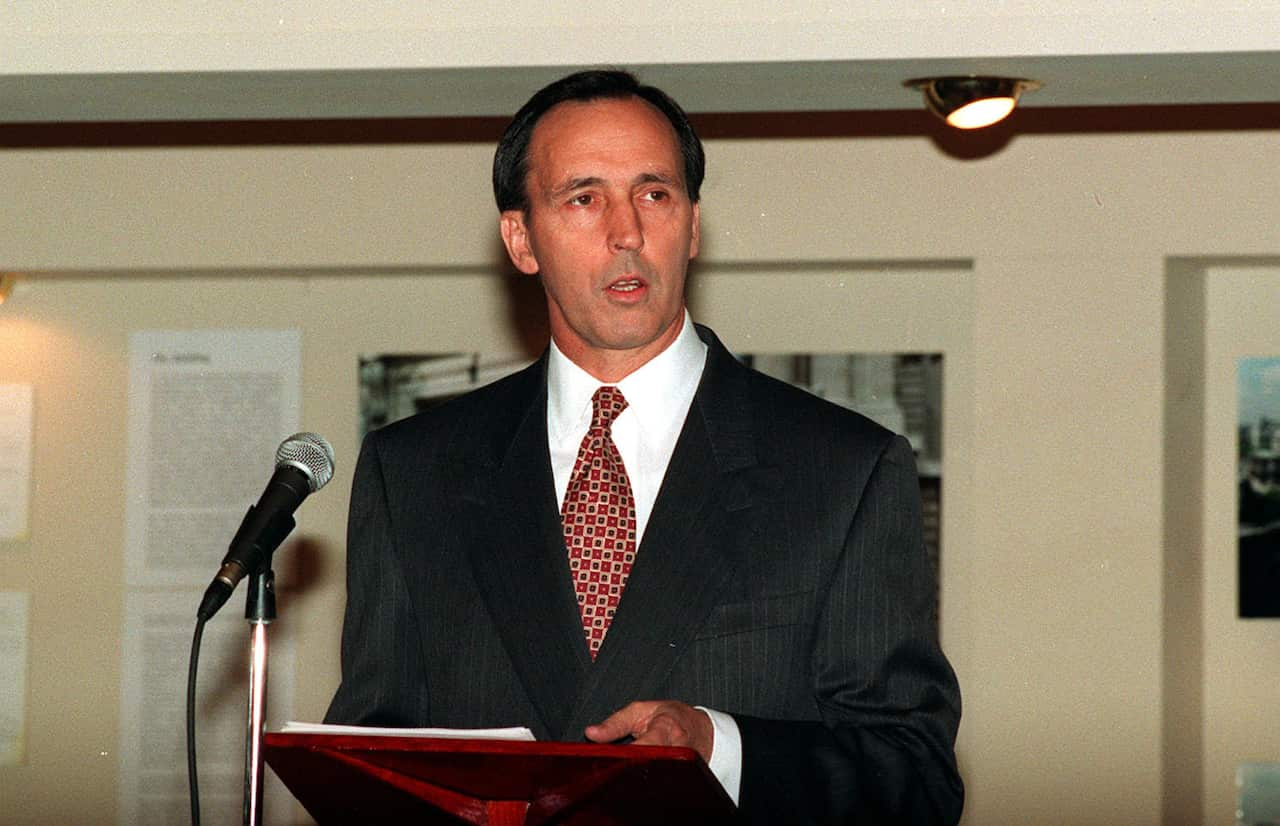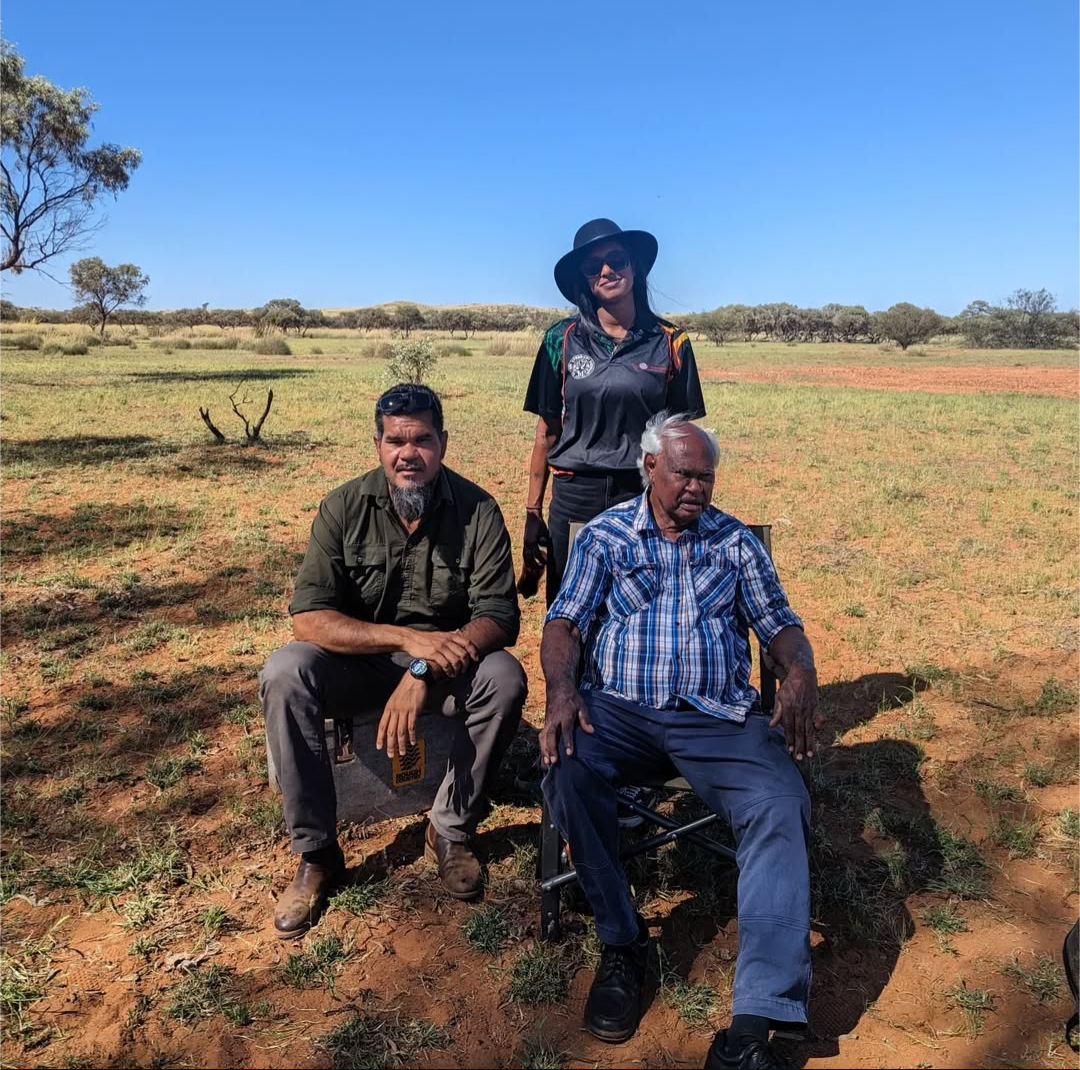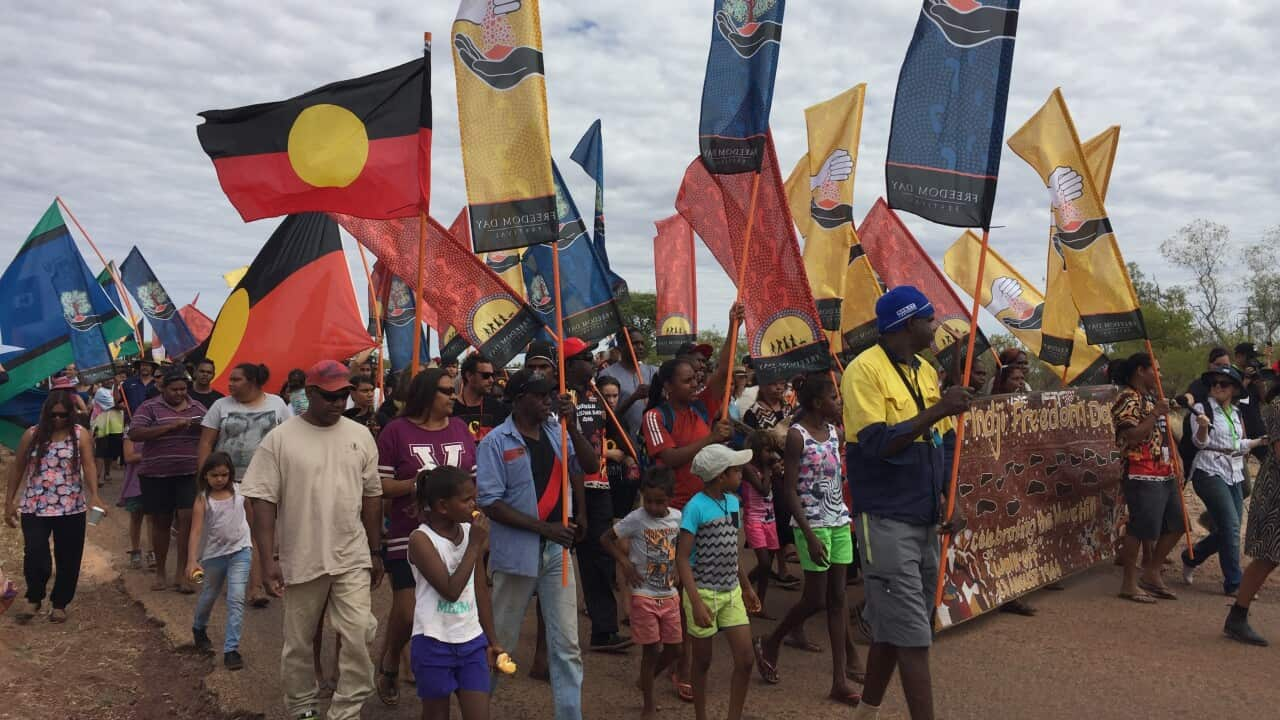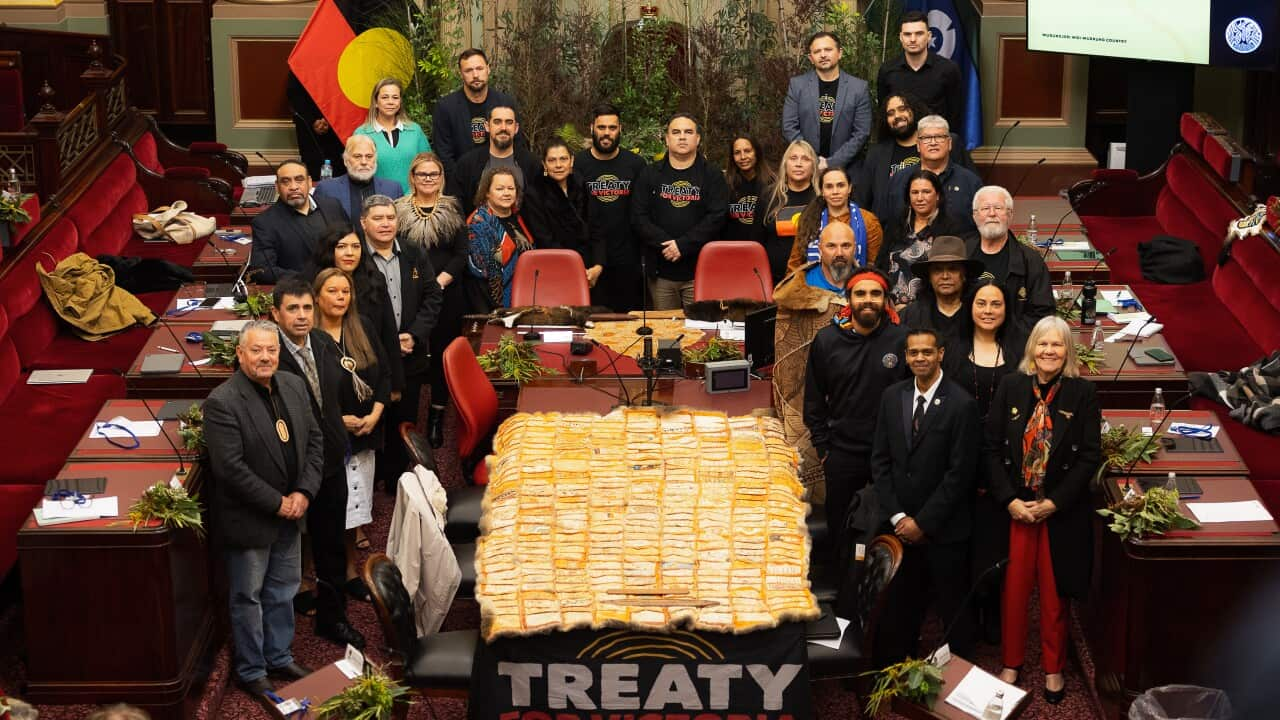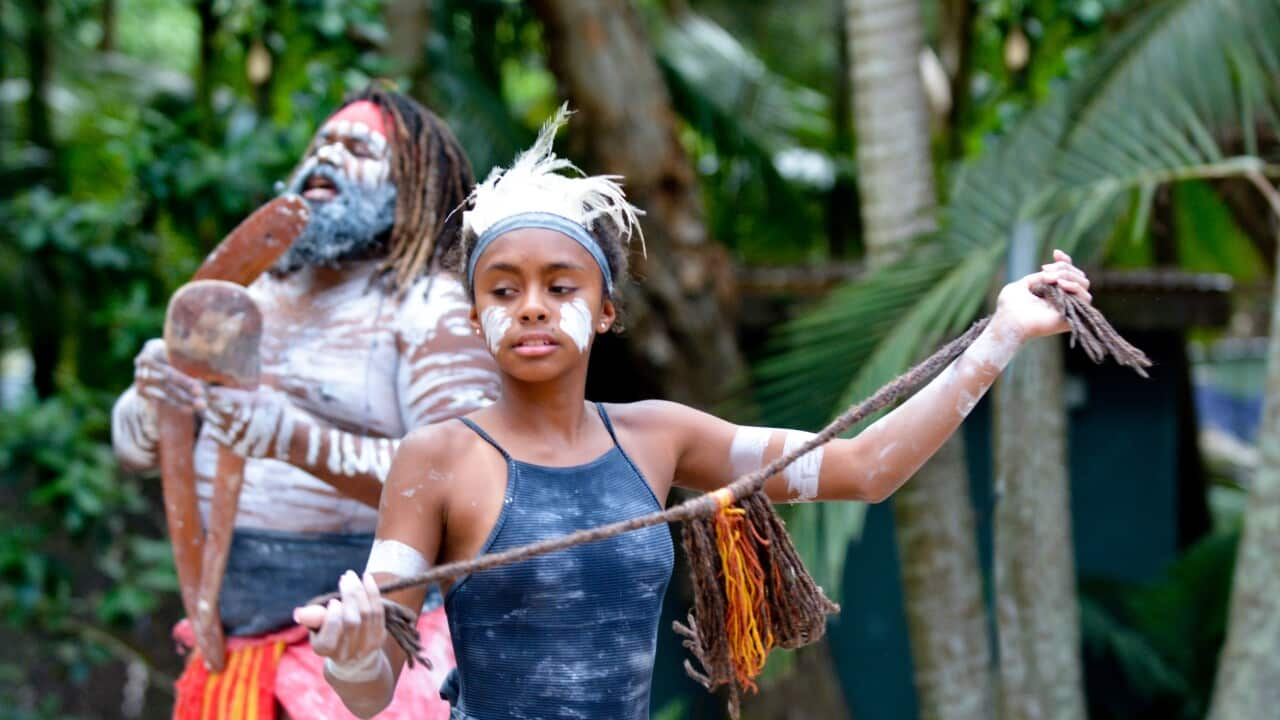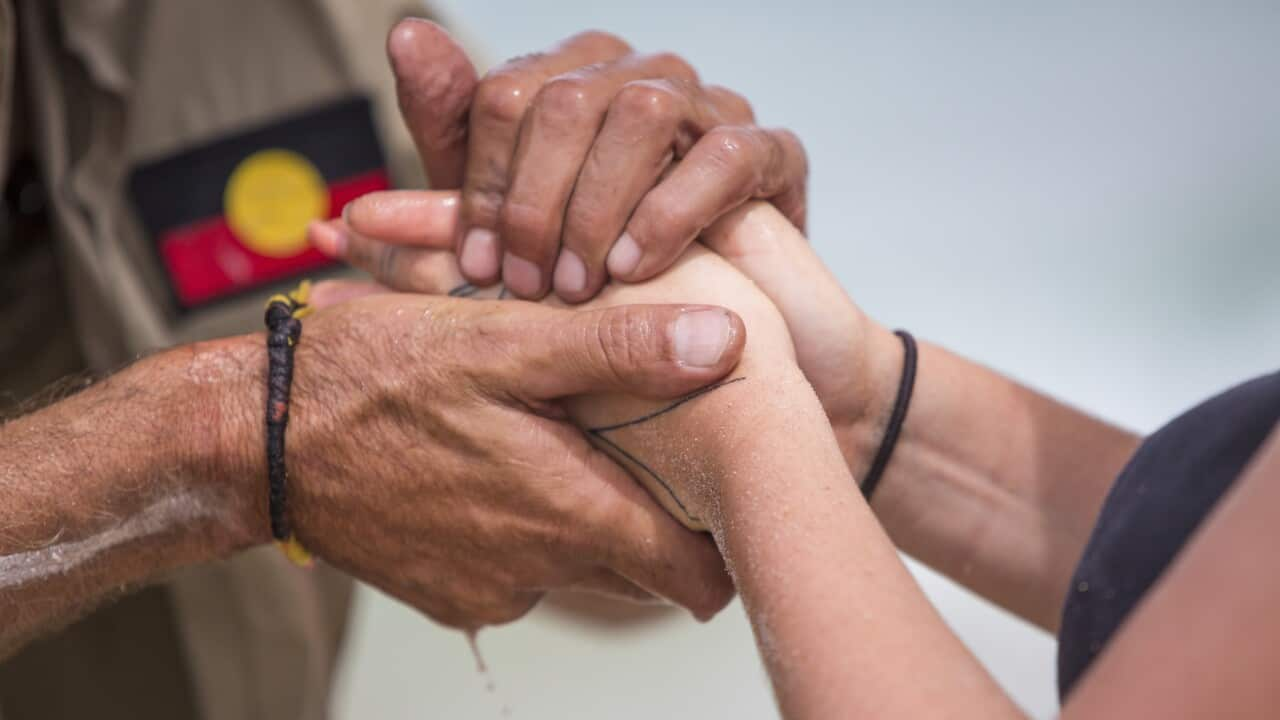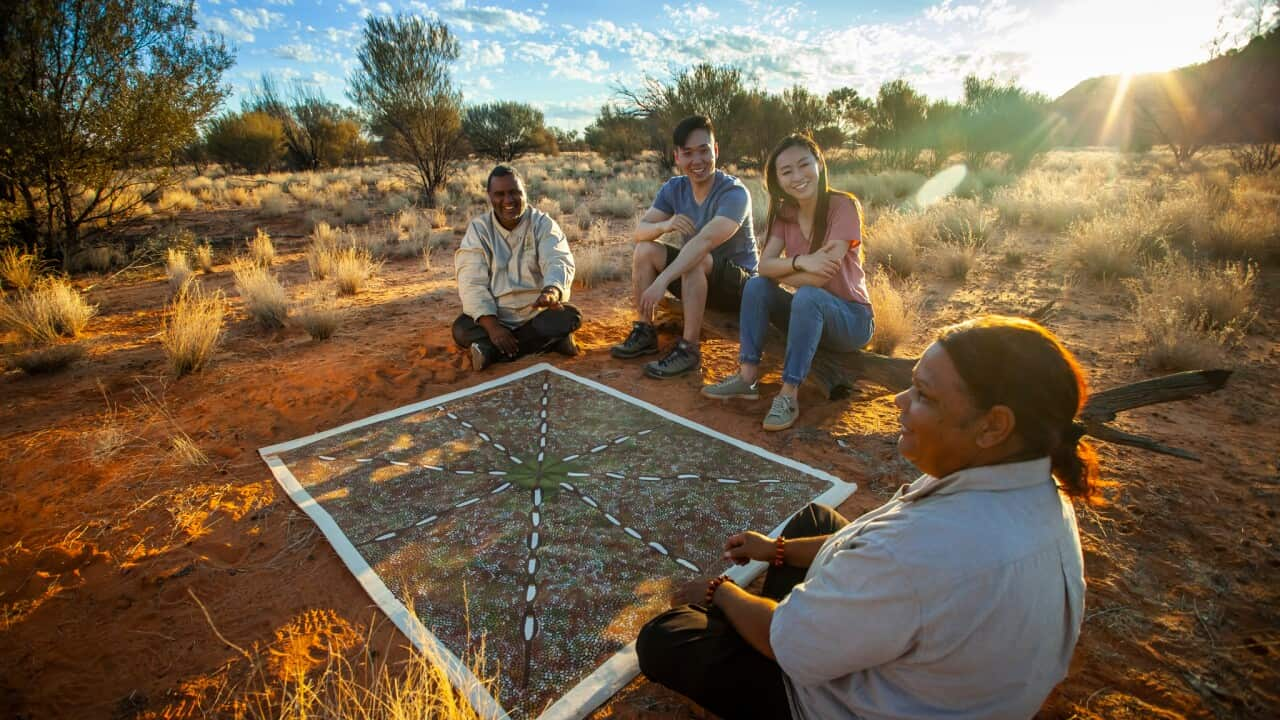Key Points
- Native title is the legal recognition that Aboriginal and Torres Strait Islander peoples have a continuing connection to land and waters, based on traditional laws and customs.
- Native title allows First Nations communities to protect their culture.
- Most people, especially living in cities and their own homes are not affected by native title, but understanding it can help participating in the conversation around it.
WARNING: This story contains the images and names of people who have passed.
Native title, land rights and treaty are three different approaches used to strengthen this culture and keep Aboriginal and Torres Strait Islanders connected to the land. You can find out more about land rights and treaty in our previous episodes.
This episode focuses on native title, what it is, its history, how it differs from land rights, and what it means today.
How did native title come about?
For more than 200 years, Australia was declared terra nullius, meaning “empty land”, not recognising the Aboriginal and Torres Strait Islander peoples who lived here before white settlement.
That changed with one historic legal case – The Mabo Case.
In 1982, a group of Meriam people led by Eddie Koiki Mabo began a legal case seeking recognition of their traditional ownership of the Murray Islands in the Torres Strait — a small group of islands just above the tip of Queensland, at the very top of Australia.
The case was lengthy, lasting nearly a decade. Then, in 1992, the High Court of Australia made a landmark decision recognising that the Meriam people held native title over their lands. This ruling was historic; it overturned the long-held legal fiction of ‘terra nullius’.
Following that decision, the Native Title Act 1993 was passed by the Federal Parliament.
On 15 November 1993, then–Prime Minister Paul Keating addressed the nation, outlining the Australian Government’s response to the High Court’s Mabo decision.
“The Court's decision was unquestionably just. It rejected a lie and acknowledged a truth. The lie was terra nullius – the convenient fiction that Australia had been a land of no one. The truth was native title – the fact that the land had once belonged to Aboriginal and Torres Strait Islander Australians and that in some places a legal right to it had survived the 200 years of European settlement.”
What does native title mean?
Native title is recognition that some First Nations peoples still have rights to their land and waters, based on their traditional laws and customs. These rights are not given by governments or made through negotiation — they are recognised by Australian courts.
Native title is often described as a “bundle of rights” because it includes many different rights, not just one. These rights can include using land and waters for hunting, fishing, ceremonies, and caring for important cultural places.
It recognises collective or communal rights that stem from long-held cultural and spiritual traditions, rather than commercial ownership.
However, native title does not replace other land uses, such as farming, mining, or local government activities. In many places, these uses exist alongside native title. This means First Nations peoples often share land rights with others, like farmers, miners, or councils.
For Aboriginal and Torres Strait Islander communities, native title is about far more than land — it’s about identity, culture, and belonging.
Professor Peter Yu, a Yawuru leader and academic, explains:
“What native title does is provide you with the opportunity to reframe the nature of fundamental rules that govern your community and relationship. So basically, that’s in terms of my own community. What it does do, also provides a reinvigorated foundation for learning and relearning languages, and song and dance, and cultural knowledge so that were able to continue the path of building succession capabilities in our family and in in our tribal groups.”
Australian Prime Minister Paul Keating (1993).
Why is native title complex?
Achieving recognition isn’t simple.
To establish native title, communities must show ongoing connection to the land — often through oral histories, stories, and records passed down through generations.
The legal process is complex, and traditional law and custom don’t always fit neatly into Western legal frameworks.
Lawyer Gwynette Govardhan, who specialises in native title and heritage law, explains the challenges.
“You're trying to fit a traditional culture into a framework, we're just trying to stuff it in and try to make it work, when really there are inherently challenges in that which creates problems, because the system itself that we're trying to fit into has not been created, the framework has not been designed for that.”
Yinhawangka Law Men Marlon Cooke (left) and David Cox ('Barndu') (right) with Gwynette Govardhan on Yinhawangka Country during a field trip to collect evidence (stories and land markings) of cultural heritage.
How much of Australia is covered by native title?
Even so, native title has brought real and lasting change.
It has helped communities revive their languages, restore traditional ways of caring for land and water, and take a stronger role in decisions about Country.
But it’s important to remember that this is different to land ownership.
If you're living in a city or regional area, like many migrants, native title probably won't change your daily life — but understanding it is a step toward respect and reconciliation.
Gwynette Govardhan explains this:
“I think it's really important to know, this is very generally speaking but something like native title rights and interests are really not going to affect people on a personal level...”
Yinhawangka Country in the Pilbara region taken by Gwynette Govardhan during an on Country field trip.
Why is native title important for all Australians?
As Paul Keating said when reflecting on the Mabo decision, bringing native title into Australia’s land management system was not just about justice for First Nations peoples, it was a step forward for all Australians.
“We can move on to see Mabo as a tremendous opportunity it is. An opportunity to right an historic wrong. An opportunity to transcend the history of dispossession. An opportunity to restore the age-old link between Aboriginal land and culture. An opportunity to heal a source of bitterness. An opportunity to recognise Aboriginal culture as a defining element of our nationhood and to make clear that this Australia – this modern, free and tolerant Australia – can be a secure and bountiful place for all - including the first Australians.”
Discussions about land rights, treaty, and native title continue across Australia. These three things have different legal and political processes, but all aim to recognise First Nations peoples’ connection to Country and support self-determination.
“We need to have our land, our culture, our language, and our community. We're not opposed to development, but we need to have this as the foundation,” Professor Yu says.
Native title is one part of Australia’s continuing story of recognition — and of keeping the world’s oldest living cultures connected to their lands and waters.
Subscribe to or follow the Australia Explained podcast for more valuable information and tips about settling into your new life in Australia.
Do you have any questions or topic ideas? Send us an email to australiaexplained@sbs.com.au
